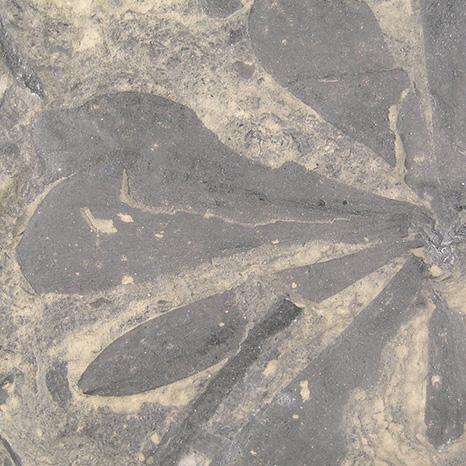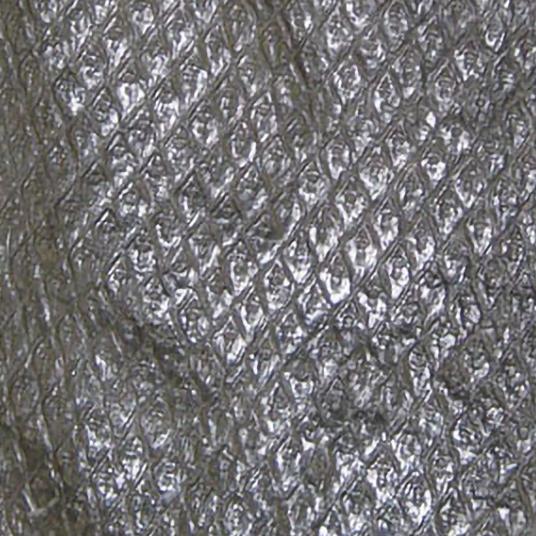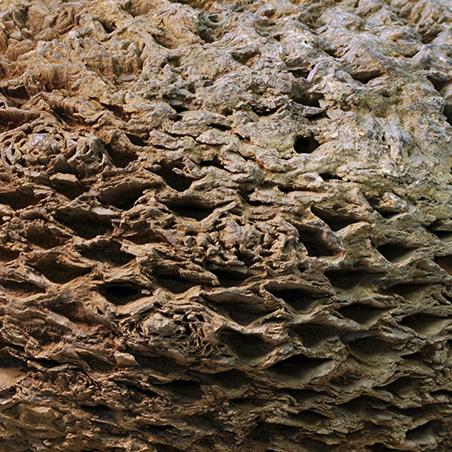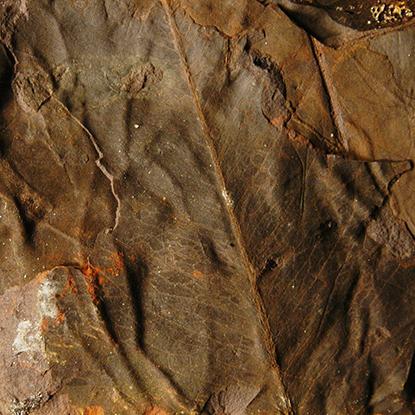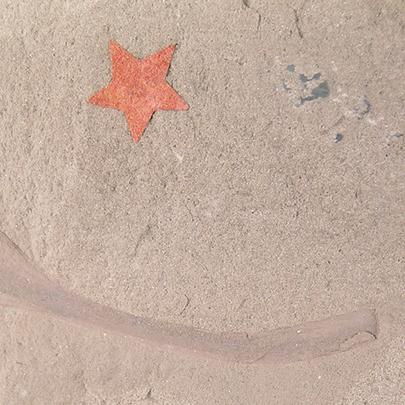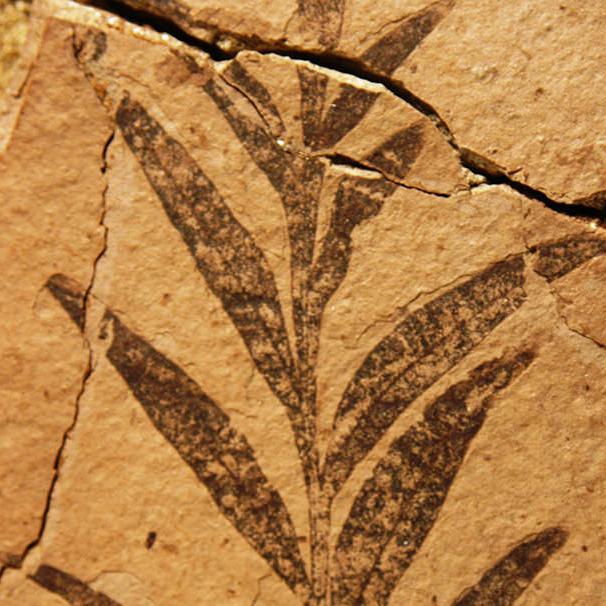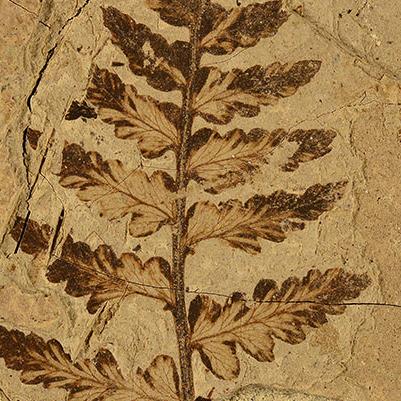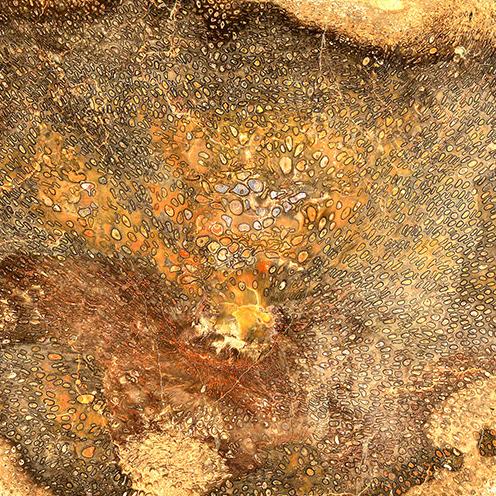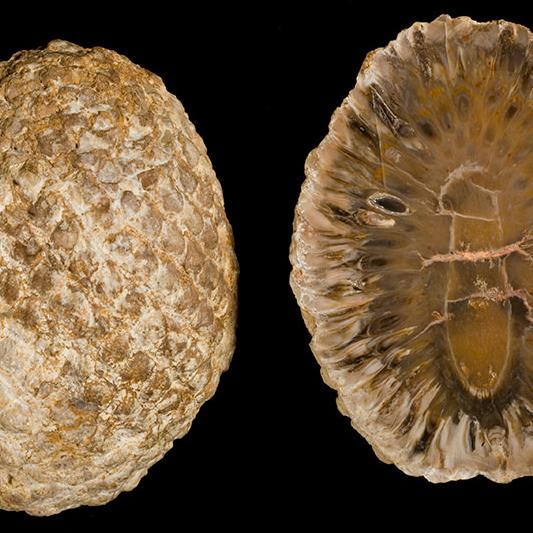Search the Collection
Of the more than 170,000 specimens in the Yale Peabody Museum’s Division of Paleobotany, 4,300 are type and illustrated specimens. The collection is worldwide in scope, with approximately 75% from North America and the remaining from the Arctic, Australia, Central America, Europe, Israel, Pakistan, Lebanon, China, India, South America, and the West Indies.
This collection, which traces its roots to the early 19th century, is one of the most historically significant in the United States. Highlights include:
- Plant fossils from the opening of the American West
- Plant fossils from the United States Exploring Expedition of 1838–1842, described by James Dwight Dana
- Triassic and late Cretaceous floras from Arizona, New York, New Jersey, and southern New England
- The world’s largest assemblage of cycadeoids
The paleobotanical collection at the New York Botanical Garden was transferred in its entirety to the Division of Paleobotany at the Yale Peabody Museum in 1983. Like Yale’s original collection, the New York Botanical Garden Collection is one of the founding collections for North American paleobotany. It includes what could be the oldest existing figured materials in American paleobotany, the glossopterids, collected in 1839 by Yale’s James Dwight Dana during the United States Exploring Expedition of 1838–1842.
This collection has a long history, originating in the early holdings of the School of Mines at Columbia College (now Columbia University) in New York City. In 1866, John Strong Newberry became chair of geology and paleobotany there and it was during his term that the Columbia Geology Museum was established.
Newberry had served as physician and naturalist on several expeditions between 1885 and 1859 led by the United States Army Topographical Engineers and gathered significant fossil plants from Oregon, Utah, Arizona, New Mexico, and Mexico. Newberry also obtained valuable Mesozoic and Tertiary fossil plants from the Washington Territories, the Yellowstone River, and Bridge Creek, Oregon, collected by American pioneer geologists and paleontologists F.V. Hayden, Reverend Thomas Condon, and Colonel George Gibbs.
After Newberry’s death in 1892, Columbia’s fossil plant collection went to the New York Botanical Garden in the Bronx, New York. Noteworthy collections of late Cretaceous floras of New England, New Jersey, and New York were added when Arthur Hollick, who had been teaching at Columbia, became an assistant curator at the New York Botanical Garden. Hollick also collected many Tertiary fossil plants from Puerto Rico and Cuba. Herman Becker succeeded Hollick and spent his career studying the Tertiary floras of Montana. The collection remained uncurated after 1974 until its transfer to the Yale Peabody Museum.
A major portion of Princeton University’s paleobotanical collection was given to the Division of Paleobotany in 1985.
This collection began with the activities of William B. Scott, the founder of Princeton’s Department of Geology, and Henry Osborn. Together they directed the Princeton University expeditions into the American West in the 1870s and 1880s.
It was during the Princeton Student Expedition of 1877 that a fossil flora from the late Eocene lake deposits at Florissant, Colorado, was gathered and later sent to Leo Lesquereux for identification. Also at this time, Princeton acquired material from the I.F. Mansfield Carboniferous Collection, much of which was also identified by Lesquereux.
In 1928 Princeton hired Erling Dorf, who added valuable collections from the Devonian, Cretaceous, and early Cenozoic Periods. With Dorf’s retirement from Princeton in 1974 use of this collection ceased until its transfer to the Yale Peabody Museum.
The Dawn Redwood - A Living Fossil
The rediscovery of this “living fossil” conifer and how it came to be planted in front of the Peabody Museum is a real detective story and an example of how scientific discovery is often an international effort.
Petrified Wood: Rainbows in Stone
The Peabody collections include stunning gem-like petrified trunks of giant trees known as araucarians—depicted in Rudolph Zallinger’s The Age of Reptiles mural—that once towered over the dinosaurs in an ancient forest.
The geological distribution of the collection is approximately one-third each of Mesozoic, Cenozoic, and Paleozoic. It also contains a small portion of Proterozoic specimens. The estimated taxonomic distribution is approximately two-thirds angiosperms, with smaller percentages of cyanobacteria, “algae,” bryophyta, lower vascular plants, progymnosperms, and gymnosperms.
Over the last decades the collection has seen unparalleled growth. Although partly the result of intense field collecting, this expansion is mainly due to the addition of orphaned collections from the New York Botanical Garden and Princeton University. These contain materials that formed the basis of the research of many founders of American paleobotany, including J.S. Newberry, Leo Lesquereux, E.W. Berry, W.M. Fontaine, Lester Ward, and Arthur Hollick.
The Division of Paleobotany also has under its care the Compendium Index of North American Fossil Plants and the database for the National Cleared Leaf special collections.
Compendium Index of North American Paleobotany
This digitized card index of 20,000 images and descriptions of North American fossil floras, including Greenland, from the Triassic to the Pleistocene is a unique and valuable classification and identification tool for fossil plants.
The National Cleared Leaf Collection
This database of more than 7,000 cleared, stained, and mounted leaves of modern plant species, housed at the Smithsonian Institution, is the major resource for foliar morphology for plant systematists and paleobotanists around the world.
Research in the Paleobotany Collections
The Peabody’s curatorial divisions are governed by the Museum’s collections policies and best practices document. Collections are available to researchers for scholarly use and loans are issued to individuals at established institutions. Loans and access can be arranged through the curatorial division’s collections manager.
|
Shusheng Hu
Collection Manager,
Paleobotany
+1 203 432 3790
shusheng.hu@yale.edu
|
The Bulletin of the Peabody Museum of Natural History, Yale University, publishes original research in the natural science disciplines represented by the collections of the Yale Peabody Museum’s curatorial divisions. Issues are available online through BioOne Complete.
